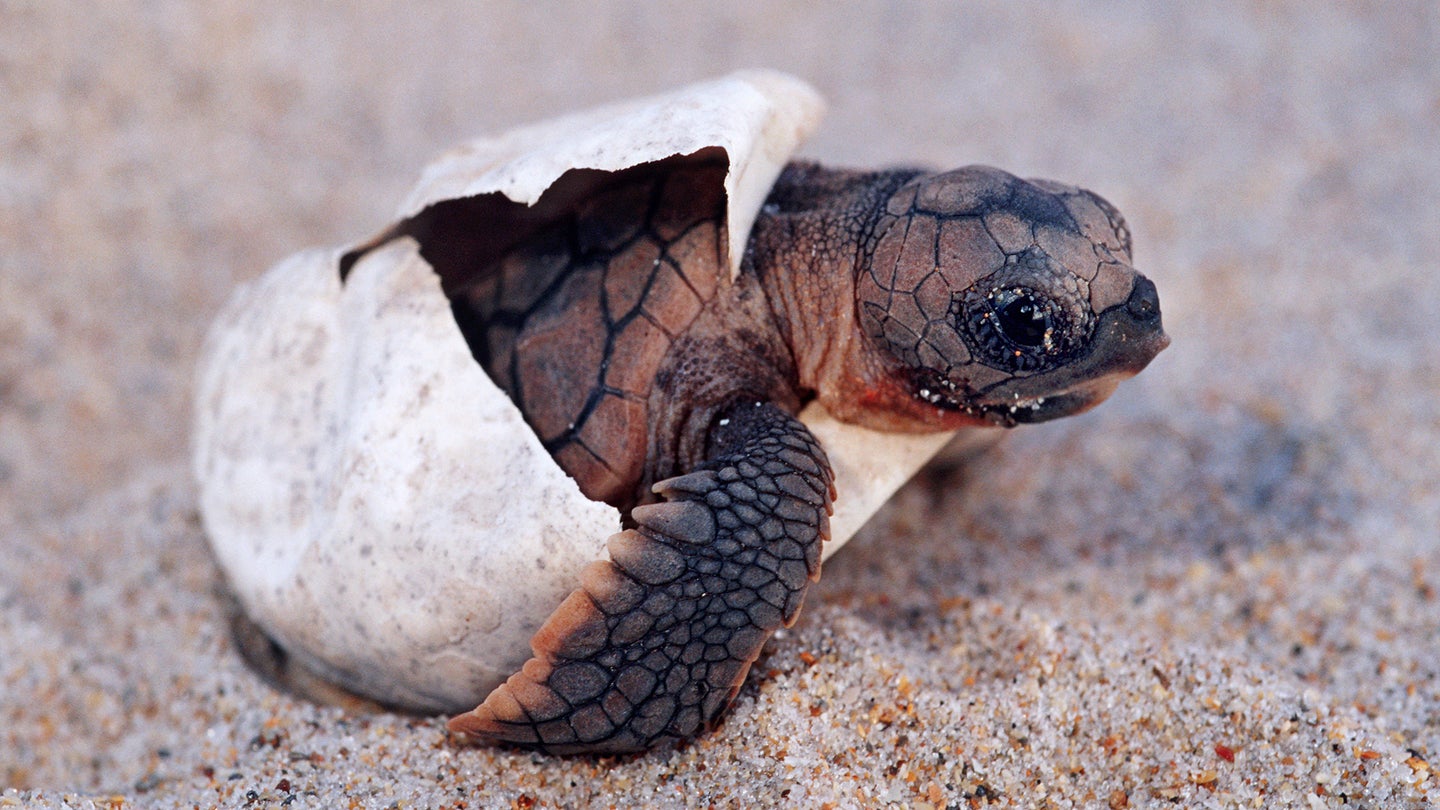Endangered sea turtles build hundreds of nests on the Outer Banks
The barrier islands saw 459 nests in 2023 including the first loggerhead turtle nest in 11 years.

North Carolina’s Outer Banks saw a busy sea turtle nesting season this year. The barrier islands stretching from Ocracoke Island north to the Virginia state saw 459 total nests between May and October, according to reporting from The Virginian-Pilot and three conservation groups in the state dedicated to sea turtle nesting.
[Related: This waddling robot could guide baby turtles to the sea.]
There are six species of sea turtles native to the United States—green, hawksbill, Kemp’s ridley, leatherback, loggerhead, and olive ridley. All six species are protected by the Endangered Species Act and four of them are known to nest in North Carolina. Human activities are the biggest threats to sea turtle species around the world. The National Oceanic and Atmospheric Administration (NOAA) says that their biggest threats are being caught in fishing gear, nesting and habitat loss, pollution and marine debris, boat strikes, climate change, and the direct harvest of sea turtles and eggs.
During the early to middle of the summer in the Outer Banks, female turtles return to the same beaches where they hatched to dig nests into the sand. They use their back flippers to dig a hole in the ground to deposit the eggs, and then cover it back up with sand. According to the National Park Service, the nesting process takes about one to three hours to complete.
The tiny turtles hatch a few months later and follow the light of the moon to the ocean. However, their journey from their nests is quite hazardous, as they can be misdirected by artificial lights from homes and streets, crushed by human activity, or eaten by predators on their way to the ocean.
[Related: Endangered green turtles are bouncing back in the Seychelles.]
At Cape Hatteras National Seashore, this year tied with 2022 as the second-busiest nesting season on record with 379 reported nests. The area covers more than 70 miles and stretches from Ocracoke Island north to Nags Head. The National Park Service says that the first nest was found on May 12 and the most recent was seen on October 29. The nests comprised 324 loggerhead turtles, 51 green turtles, three Kemp’s ridleys, and one leatherback. The leatherback nest was the first one seen on Hatteras National Seashore in 11 years.
Pea Island National Wildlife Refuge on the northern end of Hatteras island reported its third-busiest nesting season since 2009. The refuge covers about 13 miles and saw 43 sea turtle nests this year. By species, 37 nests belonged to loggerhead turtles and six were green turtle nests, according to data from the Sea Turtle Nest Monitoring System.
The nonprofit Network for Endangered Sea Turtles (NEST) also reported its third-busiest nesting season since 2015. Vice President Susan Silbernagel said 30 nests belong to loggerhead turtles and seven were green turtle nests. The all-volunteer organization covers about 50 miles from Nags Head up to Virginia.
[Related: Safely share the beach with endangered sea turtles this summer.]
To better protect the endangered turtles, volunteers and scientists have been regularly monitoring the region’s beaches since 1997. Staff members and volunteers at Cape Hatteras will establish a buffer zone around the nests for added protection.
“We could not manage and monitor sea turtle nesting without the help of over 50 dedicated volunteers that assist with monitoring of our nests and reporting and responding to sea turtle strandings,” Michelle Tongue told The Virginian-Pilot. Tongue is the deputy chief of resource management and science for the National Park Service’s Outer Banks Group.
Sea turtles spend the vast majority of their lives in the ocean and are among the largest reptiles in the world. Kemp’s ridley and green sea turtles weigh about 75 to 100 pounds, while leatherbacks can weigh about 2,000 pounds. Sea turtles are set apart from their pond or land-dwelling relatives by their flippers. Instead of these appendages, land and pond turtles have feet with claws.
Continued monitoring and vigilance during the 2024 nesting season will hopefully increase survival rates for these endangered reptiles.